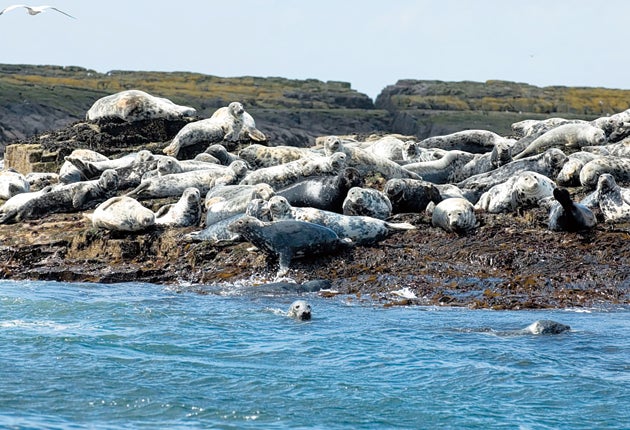Mysterious 'corkscrew' kills dozens of seals on east coast

Your support helps us to tell the story
From reproductive rights to climate change to Big Tech, The Independent is on the ground when the story is developing. Whether it's investigating the financials of Elon Musk's pro-Trump PAC or producing our latest documentary, 'The A Word', which shines a light on the American women fighting for reproductive rights, we know how important it is to parse out the facts from the messaging.
At such a critical moment in US history, we need reporters on the ground. Your donation allows us to keep sending journalists to speak to both sides of the story.
The Independent is trusted by Americans across the entire political spectrum. And unlike many other quality news outlets, we choose not to lock Americans out of our reporting and analysis with paywalls. We believe quality journalism should be available to everyone, paid for by those who can afford it.
Your support makes all the difference.Scientists are baffled by the mutilated carcasses of dozens of seals washing up on the British coast this summer, each bearing near-identical and as yet unexplained "corkscrew" lacerations.
The horrific injuries appear to have been made by machine and have been described by one researcher as looking as if the animal has passed through a giant pencil sharpener, or even a lathe cutting through thick blubber to the bone. The public is being urged to be vigilant and to contact police should anyone come across the remains of seals on beaches.
Worst hit have been populations off the Norfolk coast, where 50 carcasses have been recovered this year. But in parts of Scotland such as the Firth of Tay, where numbers of common or harbour seals have been in serious decline for the past decade, up to 10 per cent of the breeding population was found dead in June, prompting concern for the species' survival there. Seven incidents were also reported in St Andrews Bay and the Firth of Forth during the past two months.
Callan Duck, senior research scientist at the Sea Mammal Research Unit at St Andrews University, said: "We simply don't know what is causing this. We are finding seals coming ashore dead with these highly unusual lacerations right around their body like a spiral. From their head down they can have one or two complete revolutions to their abdomen. It is a continuous cut with a very smooth edge."
The injuries are not like those inflicted by existing designs of boat propeller, although the researchers believe that they are mechanically produced, most likely by an as-yet-unidentified vessel.
Seals have learned to be wary of approaching boats and tend to swim away from them, so the most likely theory is that the animals are being sucked into the blade when it suddenly starts up-close. But the investigation has failed to find any kind of offshore machinery capable of producing such wounds. One clue has been the experience of researchers in Canada where similarly injured seals were recovered a decade ago in the Gulf of St Lawrence. It was believed that the culprits were Greenland sharks, which can grow up to six metres in length and are the Arctic's most fearsome predator, having been linked to attacks to polar bears.
But Mr Duck said it was unlikely that sharks could be responsible for the deaths of the seals off the east coast of Britain, despite some evidence to suggest that great whites, similar to the Greenland shark, may have been spotted off the UK in recent years. "We would expect a seal that has been bitten by a shark to have teeth marks on them. This is a single very clean cut with no evidence of sawing," he said.
Populations of harbour seals were devastated in 1988 and again in 2002 by outbreaks of the phocine distemper virus (PDV), resulting in losses in British waters of up to 20 per cent. Numbers have been recovering slowly since then.
Once the cause of the injuries is established, scientists hope to work with ship designers to find ways of limiting the damage caused, although the industry is expected to be resistant to attempts to introduce meshing that can dramatically reduce a propeller's efficiency. The Scottish Government, the RSPCA, the National Trust and the Veterinary Laboratories Agency are co-operating in the research.
Join our commenting forum
Join thought-provoking conversations, follow other Independent readers and see their replies
Comments